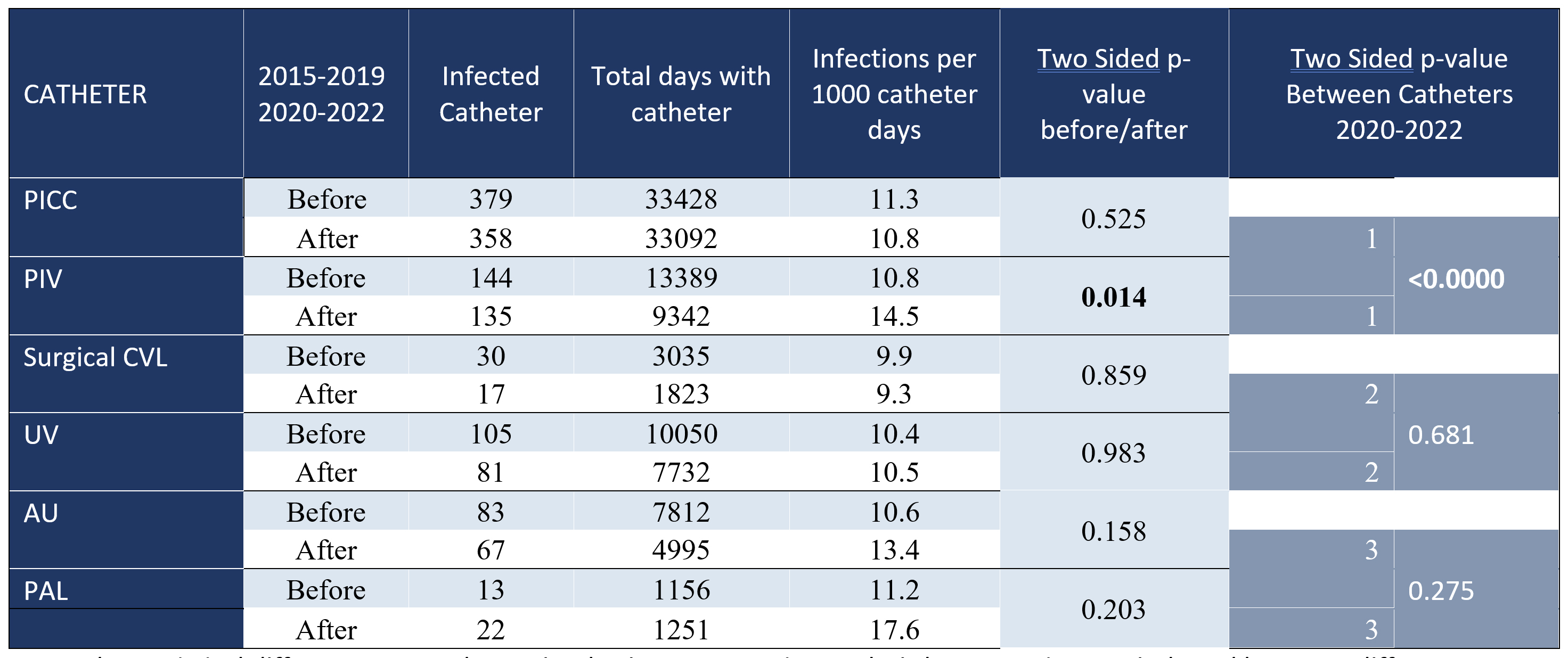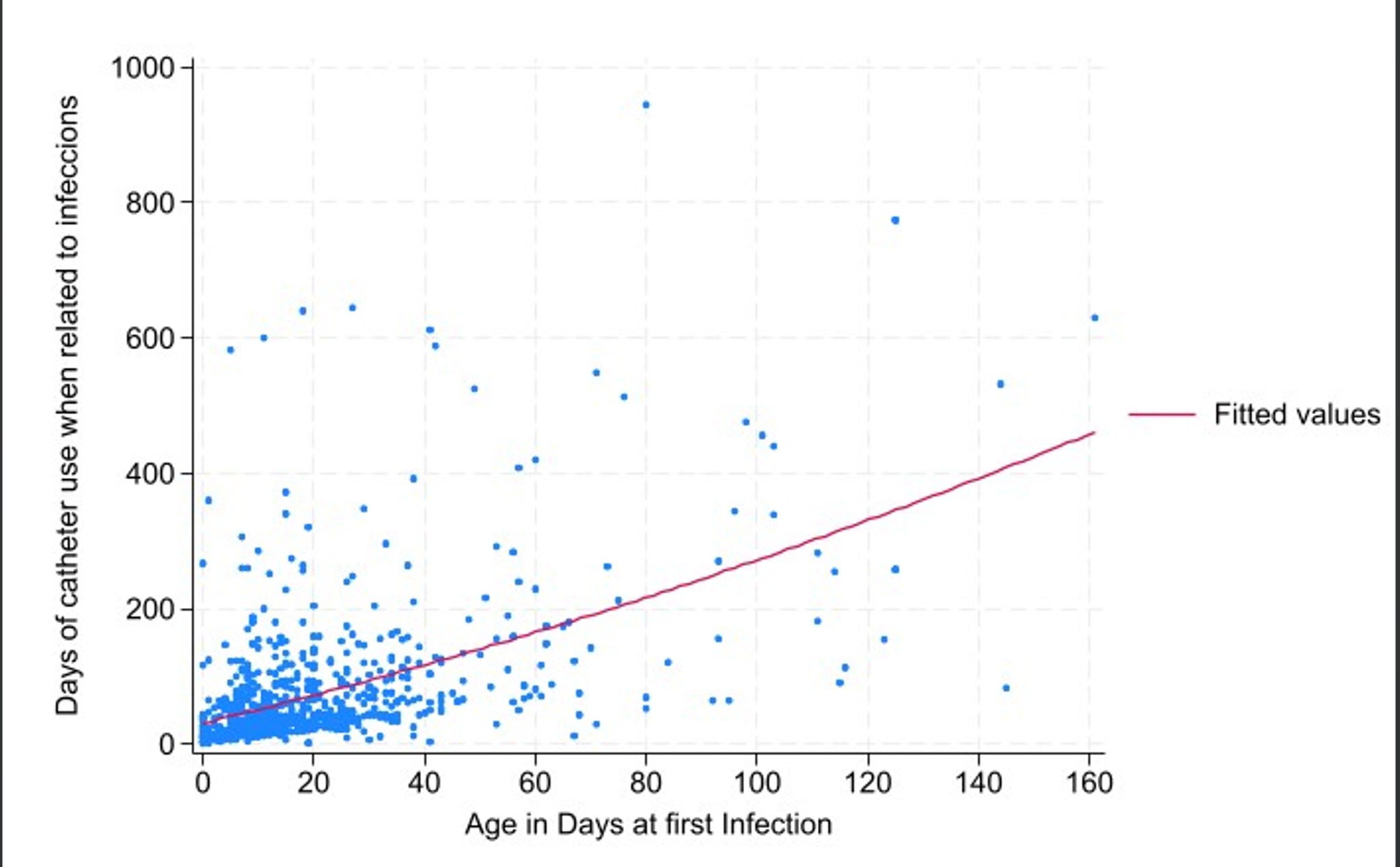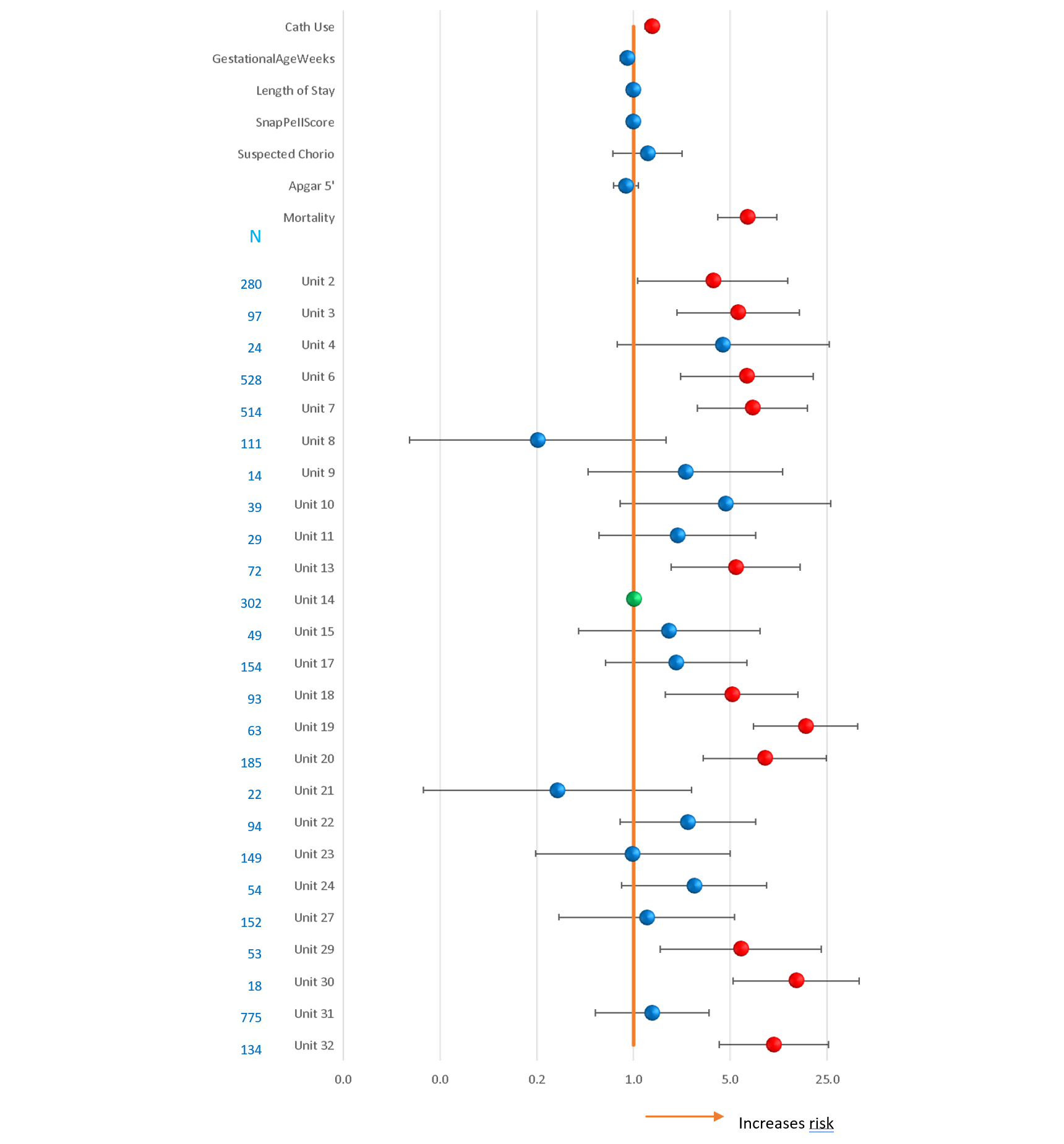Neonatology
Session: Neonatal Infectious Diseases/Immunology 2
603 - Association of Catheter Use and Infections in Infants born ≤ 32 Weeks Gestational Age at Birth in EpicLatino, a Latin America Database
Friday, May 3, 2024
5:15 PM - 7:15 PM ET
Poster Number: 603
Publication Number: 603.131
Publication Number: 603.131

Angela B. Hoyos, MD
Professor
Universidad El Bosque
BOGOTA D.C., Distrito Capital de Bogota, Colombia
Presenting Author(s)
Background: The association between vascular catheter use and infections in preterm infants is well known, but this association has not been well studied in Latin America.
Objective: We examined the association between different types of vascular catheters and infections with positive blood/cerebrospinal fluid cultures. Additionally, we assessed the correlation between catheter use and postnatal age at the time of first infection.
Design/Methods: We analyzed 2015-2022 data from the EpicLatino database, a network of 32 units in Latin America and the Caribbean. An infection with a positive blood/CSF culture was categorized as a catheter-related infection (CRI) if the culture occurred while the infant had one or more catheters in use. We calculated the infections per 1000 catheter days (Ix1000CD) and assessed the significance of variation in two time periods (2015-2019 versus 2020-2022 before/during-after pandemic). We examined the correlation between age at first infection and CRI. We also correlated age in days at the first infection and catheter days in those related infections. Finally, we conducted a negative binomial regression analysis, adjusting for catheter use, gestational age (GA), length of stay, SNAPPE II Score, suspected chorioamnionitis, Apgar score at 5 minutes, and mortality, to compute incidence-rate ratios (IRRs) for comparative statistics on Ix1000CD in different units of EpicLatino only during 2020-2022 since some units during 2015-2019 were different. We used for the statistics Stata 18, StataCorp LLC, Texas, USA.
Results: Table 1 shows the relationship between time periods and types of catheters. Figure 1 illustrates the correlation between postnatal age in days at the time of first infection and CRIs. Figure 2 displays the IRR for all units with CRIs, along with the variables used for adjustment.
Conclusion(s): The difference in catheter-related infections between types of catheters was only observed in the comparison between PICC and peripheral line in the most recent period. Regarding the comparison between time periods, a significant increase in catheter-related infections was only observed specifically in the peripheral line group during the most recent period. The positive correlation between age at first infection and the use of catheters related to infection was expected, and the negative binomial regression analysis showed that, within the adjustment group, only catheter use, and mortality was significant. Among the units, 11 of them exhibited an increased risk of catheter-associated infection. These statistics can serve as a basis for implementing quality improvement programs.



